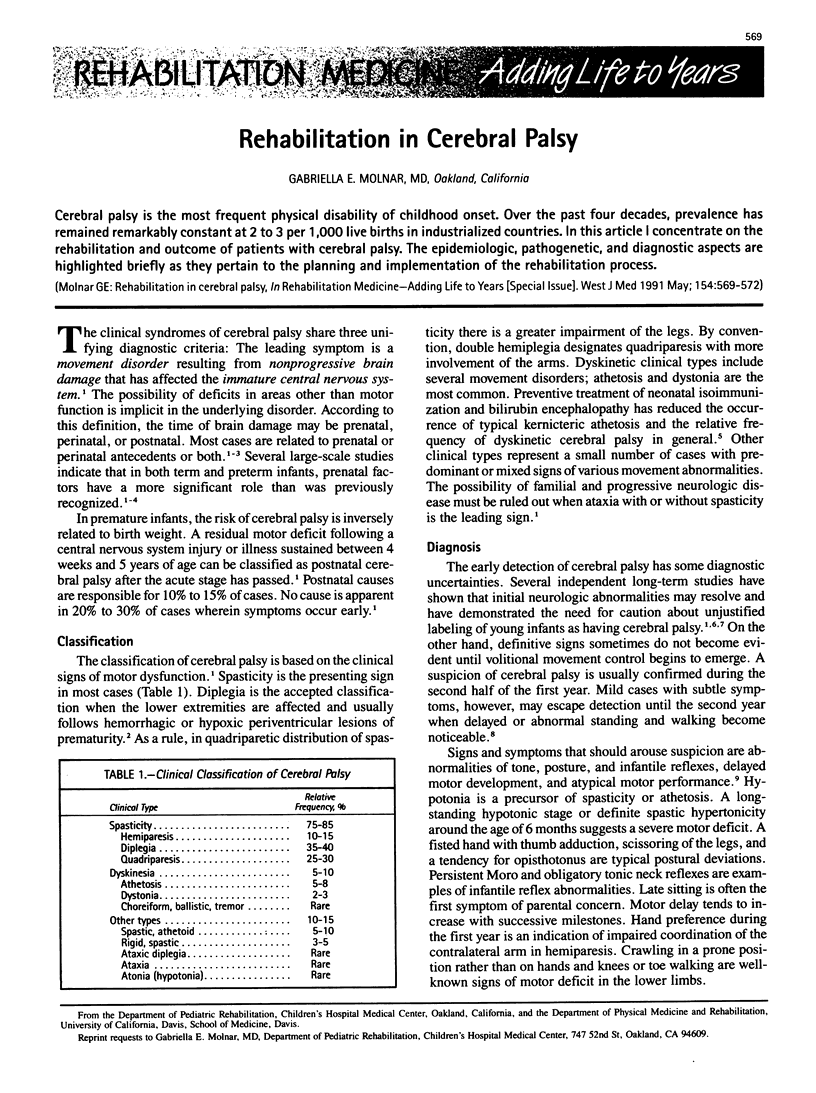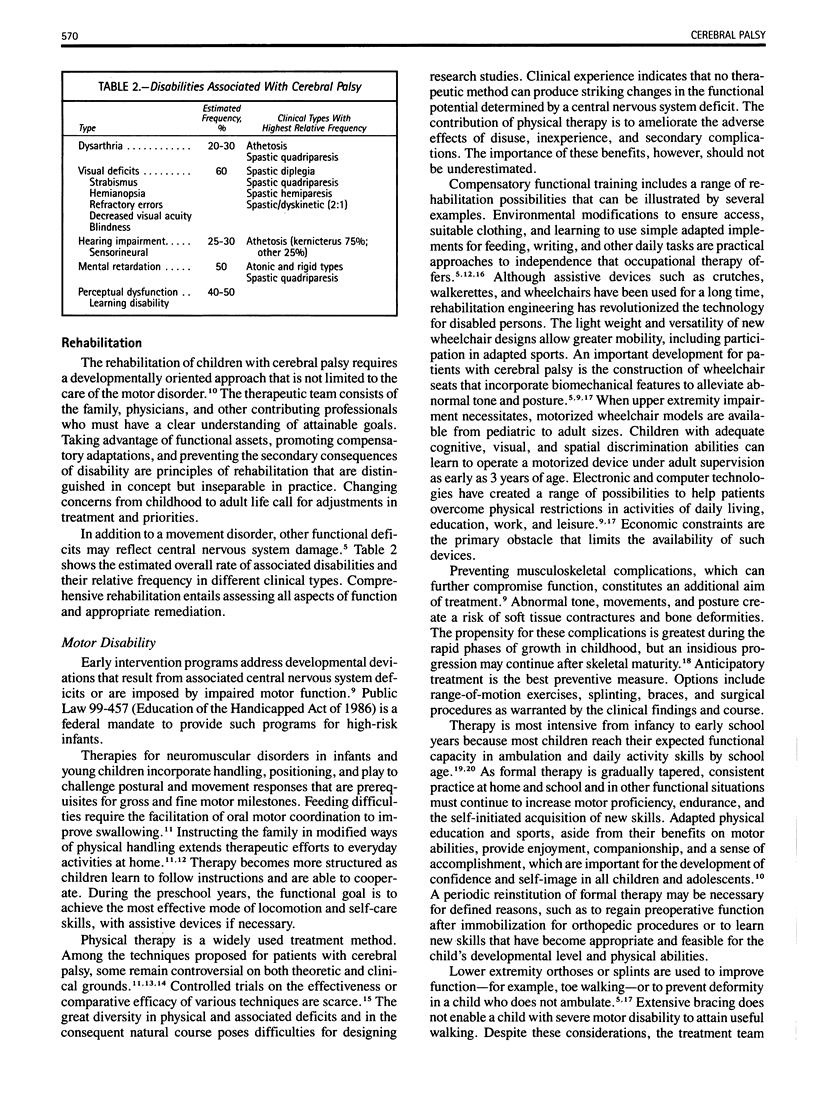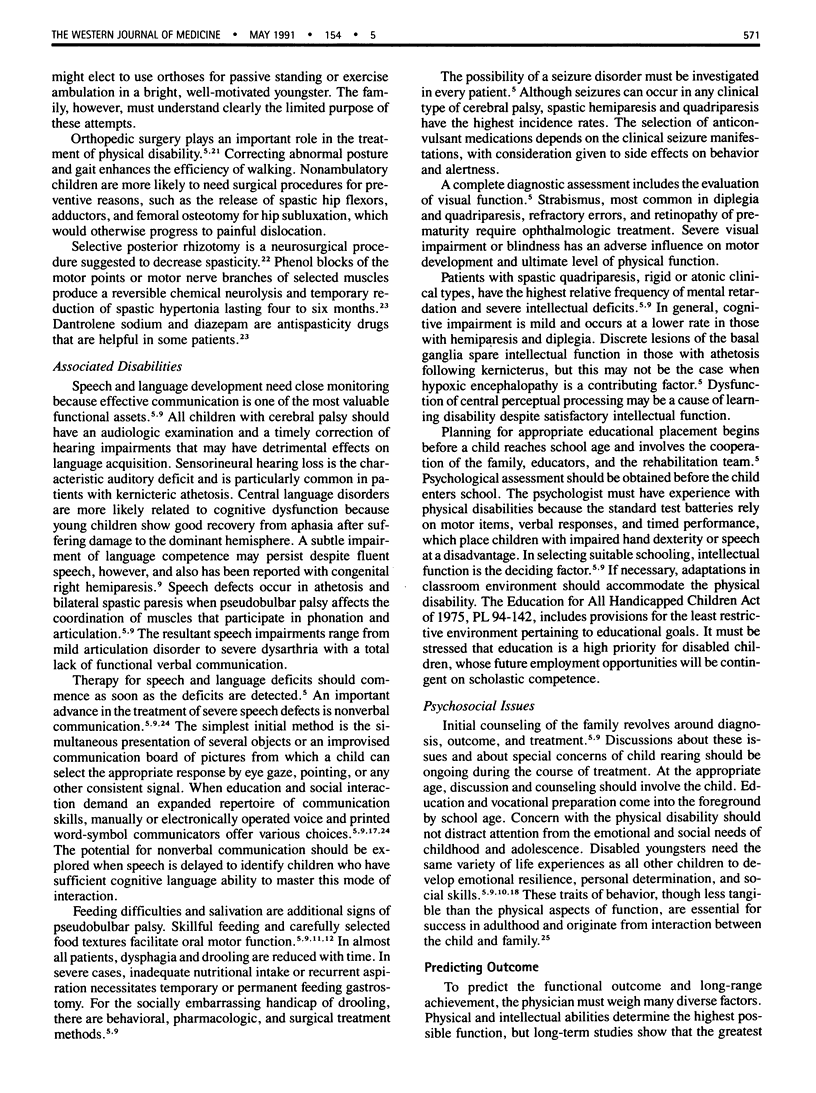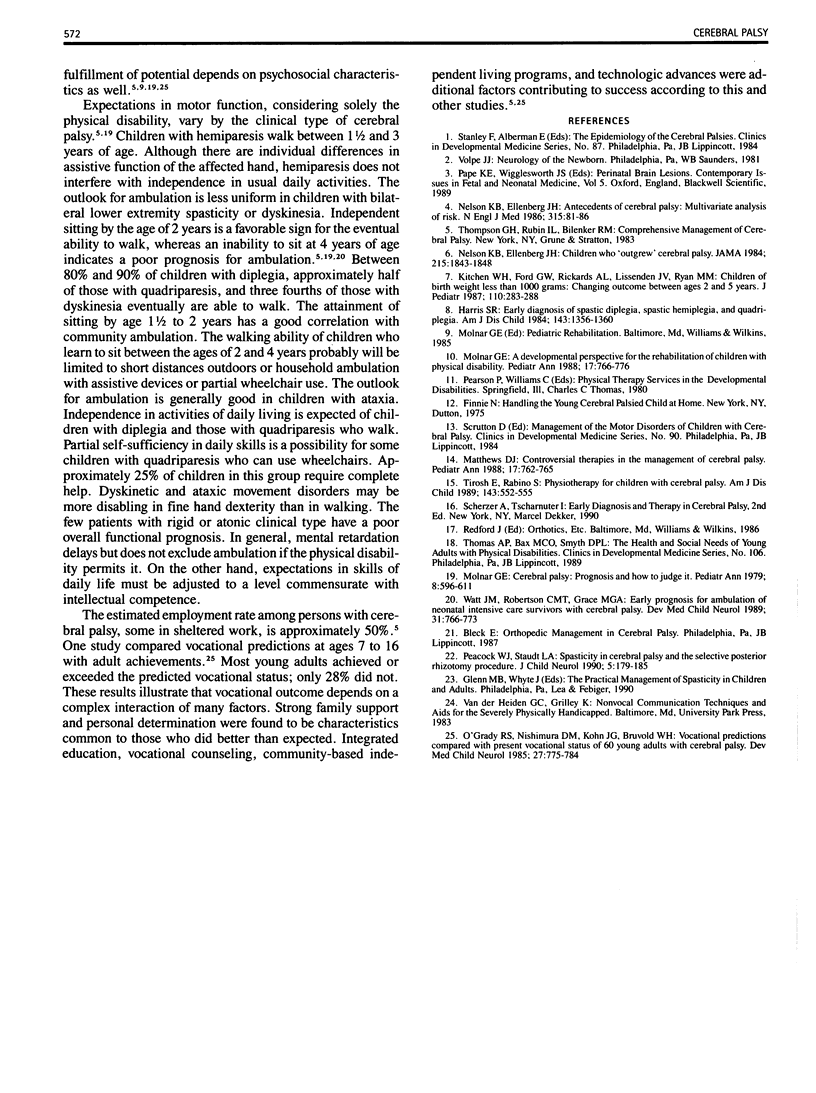Abstract
Cerebral palsy is the most frequent physical disability of childhood onset. Over the past four decades, prevalence has remained remarkably constant at 2 to 3 per 1,000 live births in industrialized countries. In this article I concentrate on the rehabilitation and outcome of patients with cerebral palsy. The epidemiologic, pathogenetic, and diagnostic aspects are highlighted briefly as they pertain to the planning and implementation of the rehabilitation process.
Full text
PDF



Selected References
These references are in PubMed. This may not be the complete list of references from this article.
- Harris S. R. Early diagnosis of spastic diplegia, spastic hemiplegia, and quadriplegia. Am J Dis Child. 1989 Nov;143(11):1356–1360. doi: 10.1001/archpedi.1989.02150230114038. [DOI] [PubMed] [Google Scholar]
- Kitchen W. H., Ford G. W., Rickards A. L., Lissenden J. V., Ryan M. M. Children of birth weight less than 1000 g: changing outcome between ages 2 and 5 years. J Pediatr. 1987 Feb;110(2):283–288. doi: 10.1016/s0022-3476(87)80174-9. [DOI] [PubMed] [Google Scholar]
- Matthews D. J. Controversial therapies in the management of cerebral palsy. Pediatr Ann. 1988 Dec;17(12):762–764. doi: 10.3928/0090-4481-19881201-08. [DOI] [PubMed] [Google Scholar]
- Molnar G. E. A developmental perspective for the rehabilitation of children with physical disability. Pediatr Ann. 1988 Dec;17(12):766, 768-71, 773-6. doi: 10.3928/0090-4481-19881201-09. [DOI] [PubMed] [Google Scholar]
- Molnar G. E. Cerebral palsy: prognosis and how to judge it. Pediatr Ann. 1979 Oct;8(10):596–605. [PubMed] [Google Scholar]
- Nelson K. B., Ellenberg J. H. Antecedents of cerebral palsy. Multivariate analysis of risk. N Engl J Med. 1986 Jul 10;315(2):81–86. doi: 10.1056/NEJM198607103150202. [DOI] [PubMed] [Google Scholar]
- Nelson K. B., Ellenberg J. H. Obstetric complications as risk factors for cerebral palsy or seizure disorders. JAMA. 1984 Apr 13;251(14):1843–1848. [PubMed] [Google Scholar]
- O'Grady R. S., Nishimura D. M., Kohn J. G., Bruvold W. H. Vocational predictions compared with present vocational status of 60 young adults with cerebral palsy. Dev Med Child Neurol. 1985 Dec;27(6):775–784. doi: 10.1111/j.1469-8749.1985.tb03802.x. [DOI] [PubMed] [Google Scholar]
- Peacock W. J., Staudt L. A. Spasticity in cerebral palsy and the selective posterior rhizotomy procedure. J Child Neurol. 1990 Jul;5(3):179–185. doi: 10.1177/088307389000500303. [DOI] [PubMed] [Google Scholar]
- Tirosh E., Rabino S. Physiotherapy for children with cerebral palsy. Evidence for its efficacy. Am J Dis Child. 1989 May;143(5):552–555. doi: 10.1001/archpedi.1989.02150170050020. [DOI] [PubMed] [Google Scholar]
- Watt J. M., Robertson C. M., Grace M. G. Early prognosis for ambulation of neonatal intensive care survivors with cerebral palsy. Dev Med Child Neurol. 1989 Dec;31(6):766–773. doi: 10.1111/j.1469-8749.1989.tb04072.x. [DOI] [PubMed] [Google Scholar]


